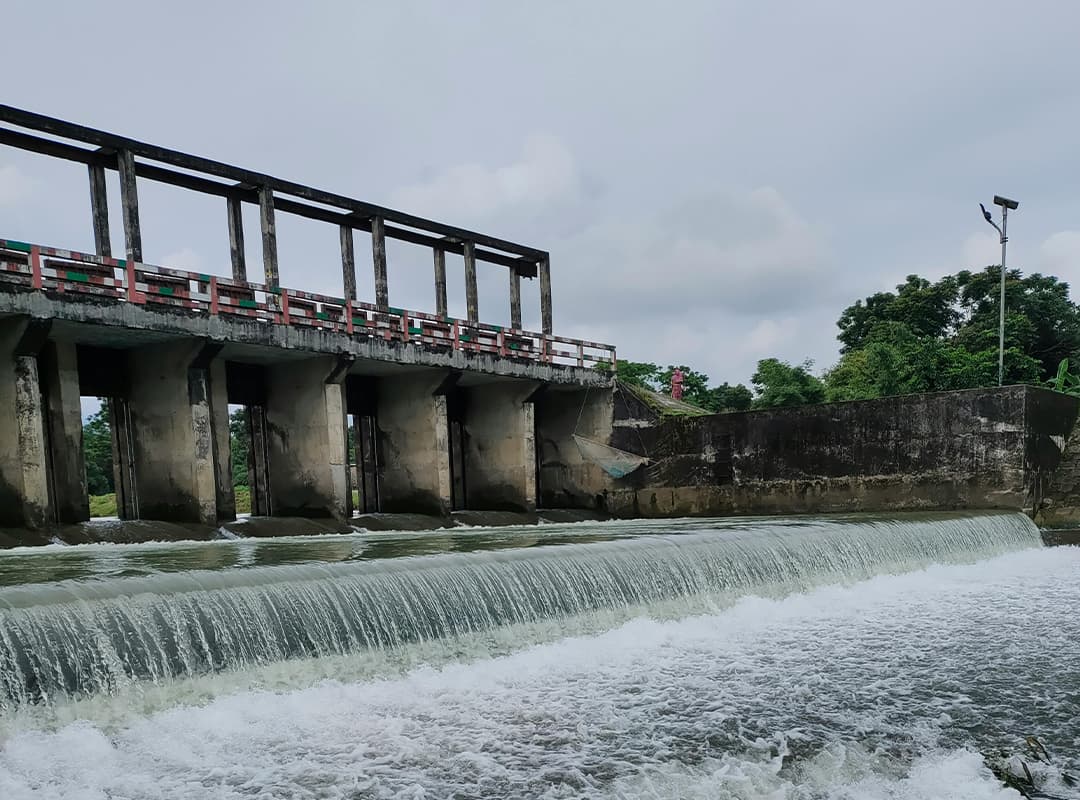Small hydropower here refers to hydropower plants with an installed capacity of less than 10 MW. Hydropower plants are power plants that generate electricity by driving turbines and generators through the gravitational force of falling or flowing water. Due to the natural water cycle, mainly through evaporation, wind and rain, the water then returns to its original height. Thus, it is a renewable form of energy. Small hydropower can be a useful source for electrifying isolated locations and can also provide an additional contribution to national electricity production for peak demand.
Small hydropower uses water flow to turn turbines that are connected to a generator to produce electricity. Small hydropower is divided into additional categories based on size, such as mini- (less than 1000 kW), micro (less than 100 kW) and pico (less than 5 kW) (EHSA 2005); definitions may vary by manufacturer and country, as there is no internationally accepted definition of small hydropower. In China, small hydropower has a capacity of up to 25 MW, in India – up to 15 MW, and in Sweden “small” is up to 1.5 MW. However, a capacity of up to 10 MW is generally recognized by the European Small Hydropower Association (ESHA), the European Commission, and UNIPEDE (the International Union of Electricity Producers and Distributors).
In general, there are three different configurations of hydropower plants
- river flow;
- storage;
- pumped storage.
If it is possible to store water through an existing or newly constructed dam, then the power plant is a pumped storage plant. If it is possible to return the water to the upper reservoir by pumping, then it is a PSPP. This is rare for small hydropower plants. River power plants use flowing water to generate electricity without the need to change the river flow. Mini-, micro-, and peak power plants usually do not have dams and are therefore river power plants. After use, the water used in small hydropower plants is returned to the natural course.
There are two factors that determine the amount of power that can be generated: the head (i.e., the height of the water fall) and the flow rate; the higher the head, the lower the flow rate required to produce the same amount of electricity. The total production capacity depends on seasonal and annual differences in water availability.
Depending on the head and flow rate, different types of turbines can be used (see table). There are basically two types of turbines: impulse and reaction.
Impulse turbines have a runner (the rotating part of the turbine) that runs on air, and the entire process takes place at atmospheric pressure. This type of turbine is more resistant to particles in the water, access to working parts is easier compared to reaction turbines, there are no pressurized parts, and they have better partial flow efficiency (ESHA, 2005). However, these turbines cannot be used at all facilities because they require high head, cross-flow parts of the turbines that are capable of operating at heights of up to about 4 m. Cross-flow turbines are a type of impulse turbine that have several advantages: they can be used for a wide range of head heights and power classes, and they can be very easily fabricated, for example by cutting long tubes into strips (ESHA, 2005).
Reaction turbines are completely submerged in water and enclosed in a pressure vessel. This increases the complexity of the system and makes maintenance more difficult; therefore, these systems are not well suited to areas where access to maintenance may be difficult.
